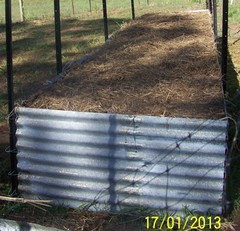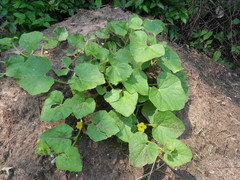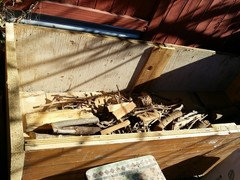HUGELKULTUR.....anyone tried this?
joeworm
12 years ago
Featured Answer
Comments (44)
Kimmsr
12 years agopnbrown
12 years agoRelated Professionals
West Chester Landscape Architects & Landscape Designers · Essex Landscape Contractors · Firestone Landscape Contractors · Kaysville Landscape Contractors · Pueblo West Landscape Contractors · Sammamish Landscape Contractors · Twin Falls Landscape Contractors · Landover Outdoor Lighting & Audio Visual Systems · Foothill Farms Decks, Patios & Outdoor Enclosures · Foothill Farms Decks, Patios & Outdoor Enclosures · Randolph Decks, Patios & Outdoor Enclosures · San Diego Decks, Patios & Outdoor Enclosures · West Bloomfield Township Decks, Patios & Outdoor Enclosures · West Hills Decks, Patios & Outdoor Enclosures · Genesee Stone, Pavers & Concretegardenlen
12 years agofeijoas
12 years agojoeworm
12 years agojolj
12 years agoKatyaKatya
12 years agoLloyd
12 years agojoeworm
12 years agoKlippenwald
12 years agojanetcw
12 years agoshebear
12 years agococonut_head
12 years agorobertz6
12 years agococonut_head
12 years agodavid52 Zone 6
11 years agozzackey
11 years agotoffee-el
11 years agolazy_gardens
11 years agotoffee-el
11 years agogardenlen
11 years agotoffee-el
11 years agodavid52 Zone 6
11 years agozzackey
11 years agopretty.gurl
11 years agogardenlen
11 years agozzackey
11 years agoHilary McDaniel
11 years agogardenlen
11 years agomaplerbirch
11 years agothedarkness
10 years agogardenlen
10 years agozzackey
10 years agothedarkness
10 years agotoucan2
10 years agomaplerbirch
10 years agothedarkness
10 years agotoucan2
10 years agomaplerbirch
10 years agooliveoyl3
10 years agoRogerSan
9 years agoHumanLosAngeles
9 years agozzackey
9 years ago
Related Stories

KITCHEN DESIGNThe Cure for Houzz Envy: Kitchen Touches Anyone Can Do
Take your kitchen up a notch even if it will never reach top-of-the-line, with these cheap and easy decorating ideas
Full Story
MUDROOMSThe Cure for Houzz Envy: Mudroom Touches Anyone Can Do
Make a utilitarian mudroom snazzier and better organized with these cheap and easy ideas
Full Story
DECORATING GUIDESThe Cure for Houzz Envy: Guest Room Touches Anyone Can Do
Make overnight guests feel comfy and cozy with small, inexpensive niceties
Full Story
DECORATING GUIDESThe Cure for Houzz Envy: Dining Room Touches Anyone Can Do
Get a decorator-style dining room on the cheap with inexpensive artwork, secondhand furniture and thoughtful accessories
Full Story
BEDROOMSThe Cure for Houzz Envy: Master Bedroom Touches Anyone Can Do
Make your bedroom a serene dream with easy moves that won’t give your bank account nightmares
Full Story
COMMUNITYCommunity Building Just About Anyone Can Do
Strengthen neighborhoods and pride of place by setting up more public spaces — even small, temporary ones can make a big difference
Full Story
BUDGET DECORATINGThe Cure for Houzz Envy: Living Room Touches Anyone Can Do
Spiff up your living room with very little effort or expense, using ideas borrowed from covetable ones
Full Story
LAUNDRY ROOMSThe Cure for Houzz Envy: Laundry Room Touches Anyone Can Do
Make fluffing and folding more enjoyable by borrowing these ideas from beautifully designed laundry rooms
Full Story
CLOSETSThe Cure for Houzz Envy: Closet Touches Anyone Can Do
These easy and inexpensive moves for more space and better organization are right in fashion
Full Story
KITCHEN DESIGN6 Clever Kitchen Storage Ideas Anyone Can Use
No pantry, small kitchen, cabinet shortage ... whatever your storage or organizing dilemma, one of these ideas can help
Full StoryMore Discussions











janetcw